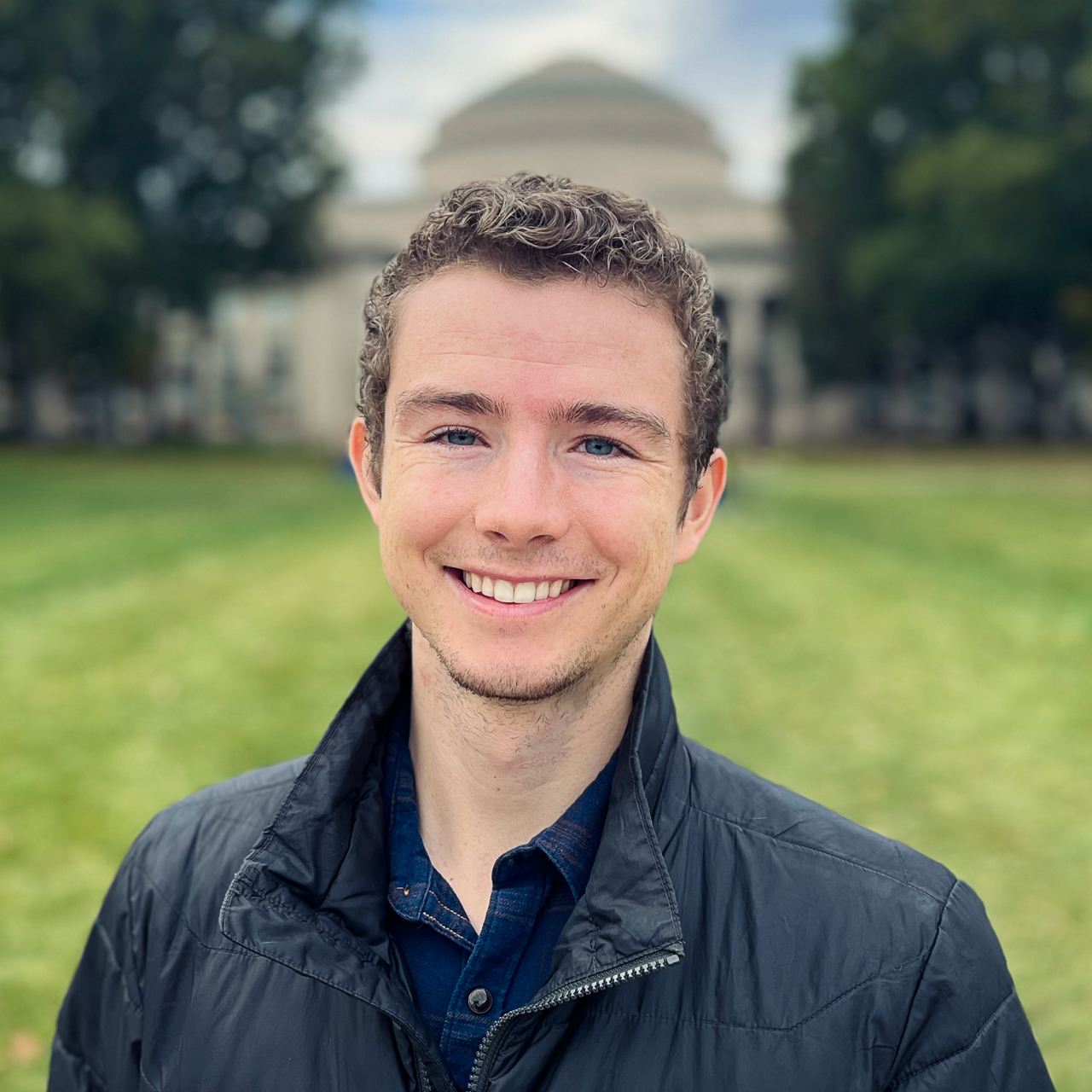
HST MEMP student Joshua Marchant is working on the development of a novel MRI-informed computational modeling strategy with the ability to predict the local distribution of intravenously delivered drugs in glioblastoma multiforme (GBM)
Mindy Blodgett | IMES
Joshua Marchant is a third year, Medical Engineering and Medical Physics (MEMP) Harvard-MIT Health Sciences and Technology (HST) PhD student, working on his thesis research at the Athinoula A. Martinos Center for Biomedical Imaging at Massachusetts General Hospital, under the direction of Dr. Bruce Rosen, Laurence Lamson Robbins Professor, Radiology, MGS, a faculty member at HST, and Harvard Medical School (HMS). Read on to learn more about Joshua's background, research, and career goals.
Can you tell us a little bit about yourself?
I am originally from Utah, where I received my BS in Physics and minor in Biomedical Engineering (University of Utah, ‘23). I previously did research in MRI temperature imaging and focused ultrasound therapy at the Utah Center for Advanced Imaging Research with Drs. Dennis Parker and Henrik Odeen. My research experiences there convinced me to apply to graduate school and purse a research career!
Why did you choose the HST program?
I applied to many (too many!) graduate programs, spanning physics, biomedical engineering, medical physics, and even a nuclear engineering PhD program. What made me most excited about the HST MEMP program was the capacity to split my training between a rigorous pure science/engineering discipline at MIT and medical training through Harvard Medical School, instead of compromising depth with merged coursework (such as biomedical engineering) or breadth with a single major (such as physics). I’ve always felt that a strong education in foundational principles can help immensely when later trying to problem-solve in a more applied space.
Can you tell us more about your research interests?
I am generally passionate about anything at the intersection of physics and physiology, but throughout my research journey, I have become especially focused on magnetic resonance imaging, computational modeling, and precision imaging for personalized therapeutics.
My thesis project is focused on improving quantitative measurements of tumor microstructure (vessel density, cell density, blood flow, diffusivity, etc.) using diffusion and perfusion MRI. To validate our MRI methods, I am performing simultaneous 3-photon microscopy measurements of the same microstructural properties in mice with brain tumors. These measurements could be used to improve estimates of drug delivery and radiation dose deposition for radiopharmaceutical therapy (such as targeted alpha therapy).
My project has an exciting blend of computational and experimental components. Some days I am in the lab performing MRI/optical imaging, and other days I am developing physics-informed neural networks to better fit our data. Dr. Rosen is an amazing mentor in every sense of the word! He has been incredibly supportive in allowing me to decide what aspects of the project I want to explore, which has helped me develop greater autonomy and confidence in the research process.
What do you enjoy about being at MIT and/or at HST/IMES?
I love being in an ecosystem where I am constantly invited to learn new things. Because IMES is so interdisciplinary, the majority of other students work on vastly different research problems. Learning about the work of others helps me maintain a more holistic view of biomedical research and not get tunnel vision with my own work.
What are you hoping to accomplish with your career? What are your professional goals?
I hope to pursue an academic research career in biomedical imaging and radiology, eventually settling at a biomedical imaging research center such as the Martinos Center. I would also be interested in commercializing our imaging and computational research tools in the future —all with the goal of making precision treatments safer and more effective on a patient-by-patient basis!
Do you have any hobbies you’d like to tell us about? What do you like to do in your spare time?
My wife and I welcomed a daughter into our family last year, so most of my free time right now is spent doing fun things locally with them! When I can find time for it, I also love landscape photography, backpacking, and playing guitar.
What is on your bucket list?
I’d love to take photography trips to Iceland and Patagonia, and to learn Chinese someday.
Can you tell us more about the area where you grew up, what makes it distinctive?
Utah is an amazing place! It has breathtaking national parks (5) and excellent mountains, lakes, and snow for outdoor sports, which I enjoyed a lot growing up. It is rich in Native American, pioneer, and even some Mexican/Spanish history and culture. It has a rapidly growing economy and real estate (which sadly means some of the open space is disappearing!). Take a visit if you’ve never been!
What do you hope to be doing in 10 years?
Hopefully, I’ll be starting up a research group, running cool experiments, learning to mentor students, and of course enjoying adventures outside the lab—wherever the journey takes us!
